Stornoway, Eilean Siar, Scotland, UK 作者: 来源: 发布时间:2021-09-17
I. Population and Area
Continent: Europe
Country: The U.K
State/Province: Scotland
City/Town: Stornoway, Eilean Siar
Total Area: 1.22 (sq mi)
Population in 2015: 8.04 (thousand)
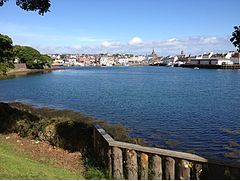
II. Natural Geography (environment and resources)
Ferry
The Caledonian MacBrayne-operated ferry MV Loch Seaforth has been sailing since 2015, from Stornoway harbour to Ullapool on the Scottish mainland, taking 2 hours 30 minutes. There are an average of two return crossings a day: more in summer than in winter. The former main ship on the route, MV Isle of Lewis (1995), used to carry the freight crossing, however she has now been reassigned elsewhere by CalMac. This means that MV Loch Seaforth is often heavily congested, particularly during the summer months.
Bus
The idea of an undersea tunnel linking Lewis and Harris to the Scottish mainland was raised in early 2007. One of the possible routes, between Stornoway and Ullapool, would be over 40 miles (65 km) long: the longest road tunnel in the world. Stornoway is the hub of bus routes in Lewis: buses run to Point, Ness, Back and Tolsta, Uig, the West Side, Lochs and Tarbert, Harris. These buses are provided by the Comhairle and several private operators as well as some community-run organisations.
Air
Stornoway Airport is located next to the village of Melbost, 2 miles (3 km) east of the town; there are flights to Benbecula, Edinburgh, Inverness and Glasgow, operated by Loganair and Flybe franchisee Eastern Airways. The airport is also the base of an HM Coastguard Search & Rescue Sikorsky S-92 helicopter, and was previously home to RAF Stornoway. In 1898, the Hebridean Light Railway Company was proposed, with a terminus at Stornoway, but the line was never constructed.
Climate
Like much of the British Isles, Stornoway has an oceanic climate, with relatively little variation of temperature and damp conditions throughout the year. Winters are exceptionally mild for such a northerly location; average nighttime low temperatures in January and February, the coldest months, are above 2 °C (36 °F), while daytime high temperatures average about 7 °C (45 °F). Summers are cool, due to influence from the Atlantic Ocean; average daytime high temperatures in July and August are just over 16 °C (61 °F). Precipitation falls mostly as rain (though snow occasionally falls in winter), and October through January are the wettest months due to frequent, sometimes intense storms from the North Atlantic, which can bring heavy rain and high winds. April through July represents a markedly drier season, when storm frequency and intensity diminish markedly. June is the driest month in Stornoway, averaging at 62.1 mm (2.44 in) of precipitation, while January is the wettest month, averaging at 148.3 mm (5.84 in).
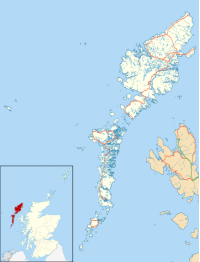
III. Economy
Gross Value Added (GVA)
Changes in Gross Value Added (GVA) per head, 1997 - 2003 (at basic current prices) | ||||
1997 | 2003 | % change in real terms | 2003 GVA (£ per head UK=100) | |
Outer Hebrides | £7,827 | £10,078 | 10.94 | 66 |
Orkney Islands '02 | £10,966 | £10,716 | -13.37 | |
Shetland Islands '02 | £11,701 | £13,197 | -0.01 | |
Highlands & Islands | £8,743 | £10,524 | 3.71 | 69 |
Scotland | £11,980 | £16,383 | 14.40 | 96 |
Source: 2003 Western Isles Regional Accounts
The best source of accurate GDP figures for the Outer Hebrides is the 2003 Regional Accounts. (Summary of 2003 Regional Accounts.)
Regional Accounts estimates Gross Regional Domestic Product (GRDP) based on first hand survey work and analysis. GRDP is simply a measure of the total economic activity within a region, and corresponds to GDP at national level.
Outer Hebrides GRDP in 2003 was estimated at £263.02 million. Since the total resident population of the Outer Hebrides in 2003 was 26,100 (General Register Office for Scotland, 2003), GDRP per head in that year is estimated at £10,078.
In 2003 total GRDP and GRDP per head of population estimates for the Outer Hebrides were 66% of the equivalent UK GDP per head of population (£16,383). It was also substantially lower than comparable estimates of GRDP per head for Scotland (£15,409) as a whole.
For more detail on GDP and GVA go to the Economy Section at Office for National Statistics (Opens in a new window or downloads a file)
Reference Website:
https://www.cne-siar.gov.uk/strategy-performance-and-research/outer-hebrides-factfile/economy/gdpgva/
IV. Industrial Characterisitics
Major industries:
Harbour and maritime industry
Today the harbour hosts a fishing fleet (and associated shoreside services) somewhat reduced from its heyday, a small marina and moorings for pleasure craft, a small shipyard and slipway, three larger piers for commercial traffic and Stornoway Lifeboat Station, run by the RNLI and home to a Severn-class lifeboat, Tom Sanderson. Her Majesty's Coastguard operates a Maritime Rescue Sub Centre from a building near the harbour.
A lighthouse, seaweed processing plant and a renewable energy manufacturing yard are situated on Arnish Point at the mouth of the harbour and visually dominate the approaches. Arnish Point is also earmarked by AMEC as the landfall for its proposed private sub-sea cable which would export the electricity generated from the Lewis Windpower wind farm with a planning application for 181 turbines submitted to the Scottish Executive. In 2008 the Scottish Government rejected the plans - the company responsible is currently planning their next move.
The Arnish area was also surveyed by SSE for a second sub-sea cable but lost out in favour of Gravir to the south as the preferred site. SSE prefers Arnish Point as of 2016. The manufacturing yard was originally established in the 1970s as a fabrication plant for the oil industry but suffered regular boom and bust cycles. The downturn in business from the North Sea oil industry in recent years led to a move away from serving this market. The yard is now earmarked as a key business in the development of the whole Arnish Point industrial estate and has received large amounts of funding in recent years.
In 2007 the Arnish yard was taken over by its third tenant in as many years. Cambrian Engineering fell into liquidation as did Aberdeen-owned Camcal Ltd with relatively large-scale redundancies. Both firms were affected by the absence of a regular stream of orders and left a chain of large debts impacting upon local suppliers. Altissimo Ltd is a new firm backed by a group of Swiss and Dutch investors, and has purchased the Camcal name from the previous operator. In December 2007, the yard won a contract to construct 49 towers for wind turbines in Turkey. This will ensure employment for around 70 employees for over six months.
On 1 January 1919, the Iolaire sank at the entrance of the harbour, one of the worst maritime disasters in Scottish or UK waters, with a death toll of 205 men, who were returning home from World War I.
Major projects and related introductions:
Suspension of Major Construction Projects
Following the announcement yesterday (Monday 23 March 2020) by the First Minister that building sites in Scotland should close, Comhairle nan Eilean Siar has decided to suspend construction activity on the Stornoway Primary School (Early Years Provision) and Lochmaddy Pier Improvement projects.
In addition, in collaboration with the Hebridean Housing Partnership, the Comhairle has decided to suspend activity on the Lewis Residential Care and Affordable Housing projects at Goathill, Stornoway. There will be a reducing amount of activity at all the sites over the next few days as the respective Contractors and their supply chain put in place measures to protect incomplete and temporary works on and adjacent to the sites and to make and keep the sites safe and secure for the duration of the suspension.
Reference Website:
https://cne-siar.gov.uk/news/2020/march/suspension-of-major-construction-projects/
V. Attractions
1. The Blackhouse:
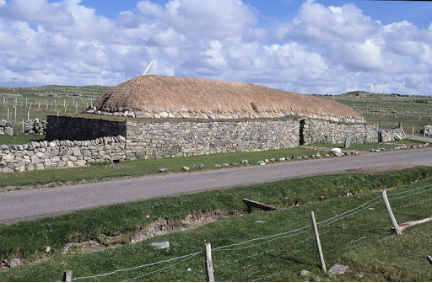
The Outer Hebrides , also known as the Western Isles , Innse Gall or the Long Isle or the Long Island , is an island chain off the west coast of mainland Scotland. The islands are geographically coextensive with Comhairle nan Eilean Siar, one of the 32 unitary council areas of Scotland. They form part of the archipelago of the Hebrides, separated from the Scottish mainland and from the Inner Hebrides by the waters of the Minch, the Little Minch, and the Sea of the Hebrides. Scottish Gaelic is the predominant spoken language, although in a few areas English speakers form a majority. Most of the islands have a bedrock formed from ancient metamorphic rocks and the climate is mild and oceanic. The 15 inhabited islands have a total population of 27,000 and there are more than 50 substantial.
2. Tombland Alley: The Heart of Historic Norwich:
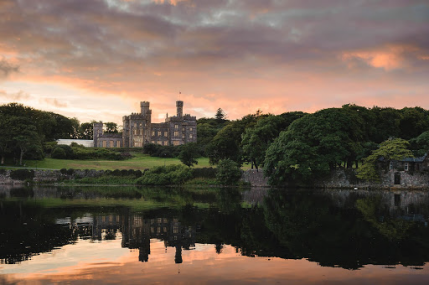
3. Norwich Castle Museum and Art Gallery:
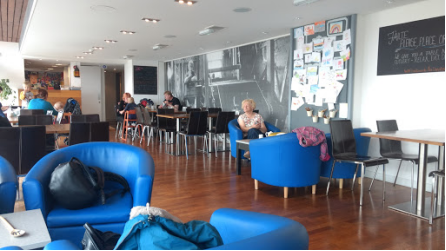
Isle of Lewis Travel Guide. MUST WATCH. Top things you have to do in Isle of Lewis We have sorted Tourist Attractions in Isle of Lewis for You. Discover Isle of Lewis as per the Traveler Resources given by our Travel Specialists. You will not miss any fun thing to do in Isle of Lewis This Video has covered Best Attractions and Things to do in Isle of Lewis Don't forget to Subscribe our channel to view more travel videos. Click on Bell ICON to get the notification of updates Immediately.
Reference Website:
https://www.destimap.com/index.php?act=place&p=Stornoway%2C-United-Kingdom
VI. History
The town was founded by Vikings in the early 9th century, with the Old Norse name Stjórnavágr. The settlement grew up around a sheltered natural harbour near the centre of the island; people travelled to Stornoway from all over the island, either by family boat or by horse-drawn coach, for onward travel to and trade with the rest of Scotland and further afield.
At some point in the mid 1500s, the already ancient MacLeod castle in Stornoway 'fell victim to the cannons of the Duke of Argyle'. By the early 1600s rumbling trade wars came to a head, and all further government attempts to curtail traditional shipping rights were firmly resisted by the islanders, as was an attempt by James VI, King of Scotland, to establish on the island the Scottish trading company known as the Fife Adventurers around 1598. As a result, James VI transferred Lewis to the MacKenzies of Seaforth in 1610.
In 1844, the MacKenzies sold Stornoway, and the Isle of Lewis as a whole, to Sir James Matheson (and his descendants) who built the present Lews Castle on a hill overlooking the bay of Stornoway. Fragmentary ruins of the old Stornoway Castle had survived in the bay until that time, and can even be seen in Victorian photographs, but Matheson destroyed them in 1882, in order to expand the harbour; a few remains of Stornoway Castle still remain, hidden beneath pier number 1, close to the shore, slightly west of centre.
In 1918, Matheson sold the island to William Lever, 1st Viscount Leverhulme. Lord Leverhulme held the island for a short time. His economic plans for the island (together with various business setbacks) overstretched his finances. Faced with failure in Lewis, he gave Stornoway parish to the people of the town. The Stornoway Trust was formed and continues to administer the parish for the people.
VII. Culture
According to the 2011 Census, there are 5,492 Scottish Gaelic speakers (43%) in the greater Stornoway area.
The annual Hebridean Celtic Festival is a 4-day community-led festival which attracts over 10,000 visitors during July of each year. The Royal National Mòd has been held in Stornoway on a number of occasions, most recently in 2005, 2011 and 2016. Large influxes of visitors such as for these events can strain the town's accommodation capacity. Stornoway is a sister town of Pendleton, in Anderson County, South Carolina, United States.
Broadcasting
The radio station Isles FM is based in Stornoway and broadcasts on 103FM, featuring a mixture of Gaelic and English programming. It is also home to a studio operated by BBC Radio nan Gàidheal. The Gaelic-language public service broadcaster BBC Alba launched on 19 September 2008, is based in Stornoway.
Stornoway Public Library
Stornoway Library operates a five-day opening service from Tuesday to Saturday, with a late night opening on Thursday evenings. The library offers book borrowing services as well as free access to wifi and computer access to the internet.
As part of its collections, the library offers access to a wide range of Gaelic materials, with a large collection of books and periodicals such as Gairm, Transactions of the Gaelic Society of Inverness, Scottish Gaelic Studies and Guth, as well as out of print publications An Gaidheal and Guth na Bliadhna. In their newspaper section, the library holds copies of Alba and Mac-Talla as well as Sruth, Scotland's only bilingual newspaper from the 1960s. Through the library membership, it is also possible to access An Stòr-dàta Stuthan Gàidhlig, a database of Gaelic educational resources.
Stornoway Library also holds an extensive local studies collection for research purposes. As part of those collections, the library holds an archive of local newspaper back editions including the Stornoway Gazette from 1917, the Highland News from 1883, the West Highland Free Press from 1972, the Oban Times from 1861, the Inverness Courier from 1817, the Inverness Advertiser from 1849 and the Inverness Courier and Advertiser from 1885. Other resources include a collection of ordnance survey maps and admiralty charts for the local area, old parochial registers, 19th century census returns, minutes of the former Stornoway Town Council as well as current Comhairle nan Eilean Siar and school log books. The library also holds the Seaforth Muniments (Seaforth Estate Papers), local croft histories and rental and valuation rolls dated as far back as the 18th century. In 2018, Stornoway Library announced plans to transform their coffee shop into a makerspace available to the general public where they run educational activities on topics including 3D printing and virtual reality.
Newspapers
The main local newspapers for the Western Isles are the Stornoway Gazette, Am Paipear and Events.
VIII. Other information
Stornoway became immortalised in the song "Lovely Stornoway" by Calum Kennedy and Bob Halfin, the song has recently been covered in by Hebridean rock band Peat and Diesel. The 4AD Records folk-rock band Stornoway took their name from the town, after seeing it on the BBC weather report. They signed their record deal outside the Woodlands Centre in Lews Castle Grounds, Stornoway, after performing in the town for the first time in April 2010. Their second concert there was as headliners on the main stage of the Hebridean Celtic Festival on 13 July 2011.
"Stornoway" is the name of the official residence of the Leader of the Opposition in Canada's Parliament. It was given the name by its second occupants, the Perley-Robertsons, after the ancestral home of the Perley family. The novel The Stornoway Way by Lewisman Kevin MacNeil is largely set in Stornoway. RAF Stornoway is featured in the Tom Clancy novel Red Storm Rising as a base for Allied air operations over the North Atlantic and against Soviet-held Iceland.
Stornoway features heavily in the initial stages of the X-Men comics Dark Phoenix Saga due to its proximity to the fictional Muir Island and Proteus' attempts to find a new host body. In the motion picture Latitude Zero by Toho Productions (1969), Stornoway Harbour is featured on a wall plaque as the construction site of the submarine "Alpha".
In 2007 the British car manufacturer Land Rover introduced Stornoway Grey as a colour choice for its vehicle line-up. In response, Stornoway's councillor Angus Nicolson appealed to Land Rover to relabel the colour as Silvery Stornoway, fearing that the association of grey with dull and boring would hurt the image of the town with tourists; Mr Nicolson said: "This is deeply insulting and is offensive, inaccurate and inherently degrading. This will hit tourism as it subliminally implants adverse connotations in the minds of those who have never experienced the reality of these beautiful islands." Land Rover replied that the colour in question is one of the most popular ones and the use of Stornoway in its name will instead "keep it on the map".
In 2011 Scottish author Peter May published The Blackhouse, the first of The Lewis Trilogy of thrillers based on Lewis, where the primary police murder investigation is based in Stornoway.
IX. Contact information
Mayor/Officer: West Tarbert
Tel: 01851 600 502
Mail: enquiries@cne-siar.gov.uk
Reference Website:
https://www.cne-siar.gov.uk/site-pages/contact-us/
